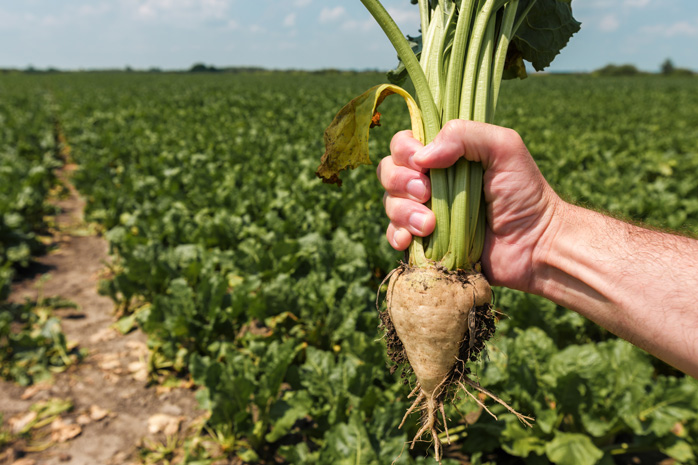Almost 50 years on from the closure of the Scottish Sugar Beet factory in Cupar, a rural innovation group aims to look into the feasibility of re-establishing the crop in eastern Scotland.
However, this time around, the aim is for the crop to contribute to climate change mitigation by producing bioethanol as a fuel additive as well as new plant-based biotech products, rather than sugar for human consumption.
Last summer, a report by the National Non-Food Crops Centre (NNFCC) identified that a refinery would need up to 20,000ha of sugar beet from arable land of class 3.1 or better, within a 30-60 mile radius of the refinery plant’s location.
Prof. Derek Stewart, agri-food business sector lead at The James Hutton Institute, said it was an “exciting opportunity” for the Scottish Bioeconomy, an underpinning part is which is the agriculture sector.
“Scottish farming is progressive and the resurrection of sugar beet production could both diversify farm incomes whilst helping to deliver to the Scottish Climate Change targets,” he said.
‘An opportunity and a challenge’
Iain Riddell from SAC Consulting, who is facilitating the group, said: “The feasibility of re-establishing the growing and processing of the crop in Scotland has brought together stakeholders with the will, the knowledge and the capability to make that vision reality.
“A resurrected crop and a new refinery could offer a huge opportunity for agriculture to contribute to CO2 reduction and in the creation of new plant-derived products, but farmers will also have to factor in the feasibility, risk and reward of growing a crop that is new to most of them.
“We have experience of producing the closely related energy beet crops for AD and the growing of fodder beet for livestock, and it should be possible to grow sugar beet, but comprehensive trials will be required to assess yield, sugar content and hardiness of modern varieties in Scottish conditions.
Farmers will see this as an opportunity, but also a challenge because growing conditions are unlike those of the dominant beet growing area of East Anglia where the crop is grown in free-draining sandy loams.
“We’d see the opportunity best suited to the better arable land in Angus, Fife and Perth and Kinross, potentially extending into the Lothians and Aberdeenshire, all depending on the refinery’s location.
“Wider challenges will also need to be considered, such as the potential for soil compaction associated with late, wet harvesting conditions.”
Project collaborators include Scottish Enterprise, The James Hutton Institute, SAOS and IBioIC (the Industrial Biotechnology Innovation Centre), and farmers will have a chance to join in shortly through the Rural Innovation Support Service (RISS) project.
David Smith, director of national opportunities at Scottish Enterprise, explained the environmental benefits of sugar beet as an alternative manufacturing feedstock will be investigated for use across a wide range of sectors instead of traditional fossil-based feedstocks.
Ian Archer, technical director at Industrial Biotechnology Innovation Centre, said: “Biotechnology is the technology that underpins the bio-economy enabling the creation of new products and new processes to replace those we currently make from fossil-based resources.
“We currently import all of the bioethanol blended into forecourt petrol from England and France (the “E5” sticker we see on a petrol pump means the fuel has 5% bioethanol mixed into the petrol).
“Initially, Scottish sugar beet can be used as a raw material to provide a secure source of Scottish bioethanol from a local supply chain.
In time, the supply chain around the production of industrial-grade sugar syrup from sugar beet will draw high-value manufacturing companies and entrepreneurs to Scotland to set up new facilities that use biotechnology to produce materials, medicines and other everyday products from this sustainable natural resource.
“Successfully reinstating a local source of sugar beet will enable the biotechnology sector to flourish in Scotland and with it, contribute to a just transition to a low carbon economy.”

